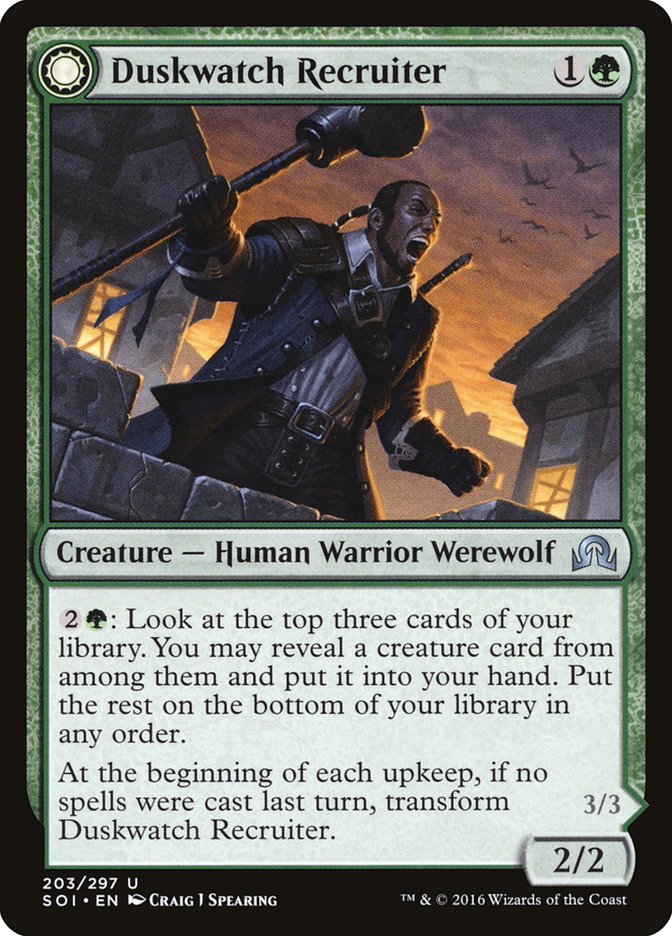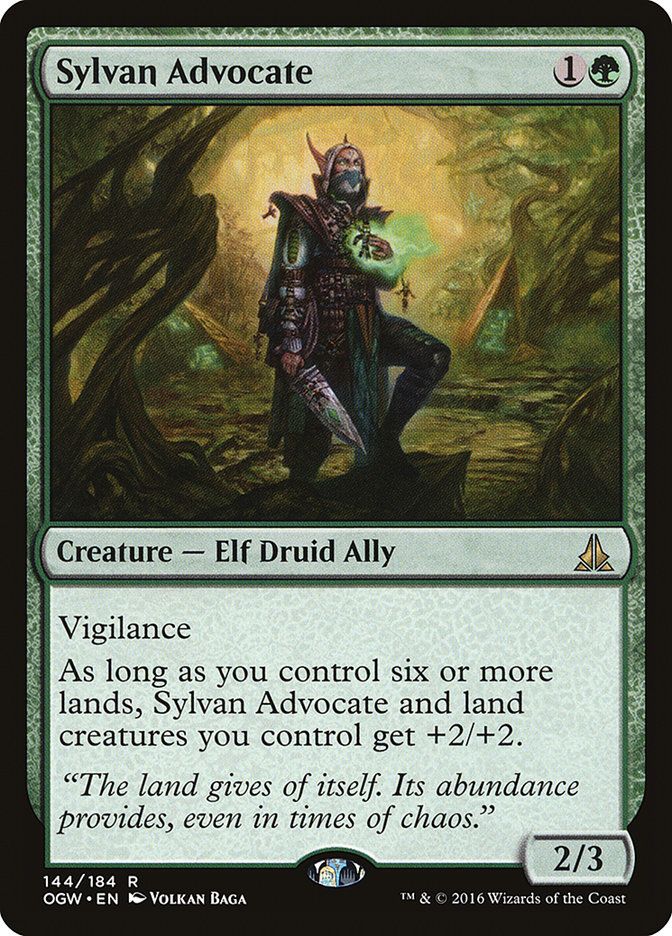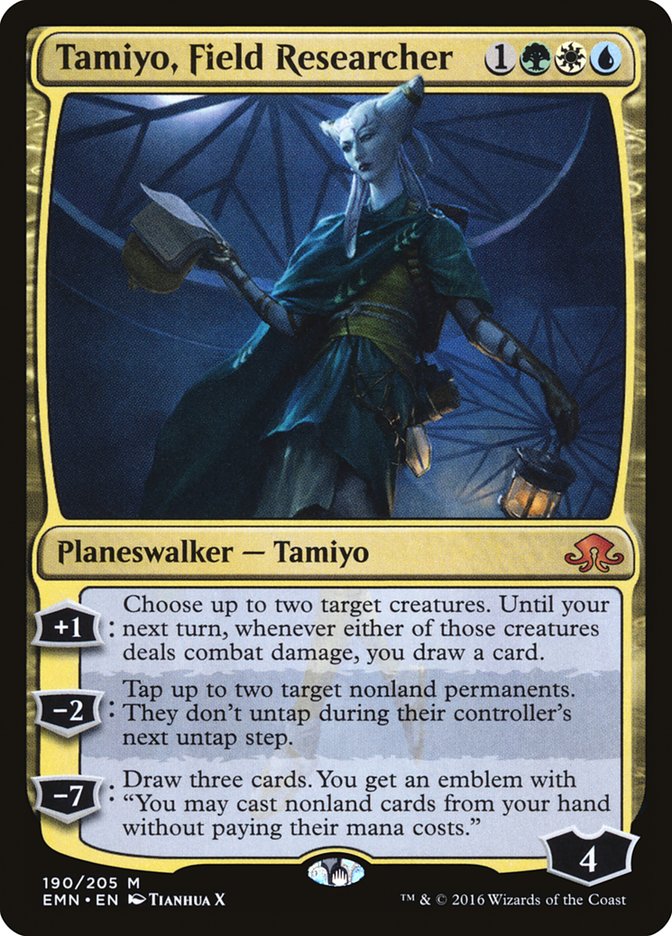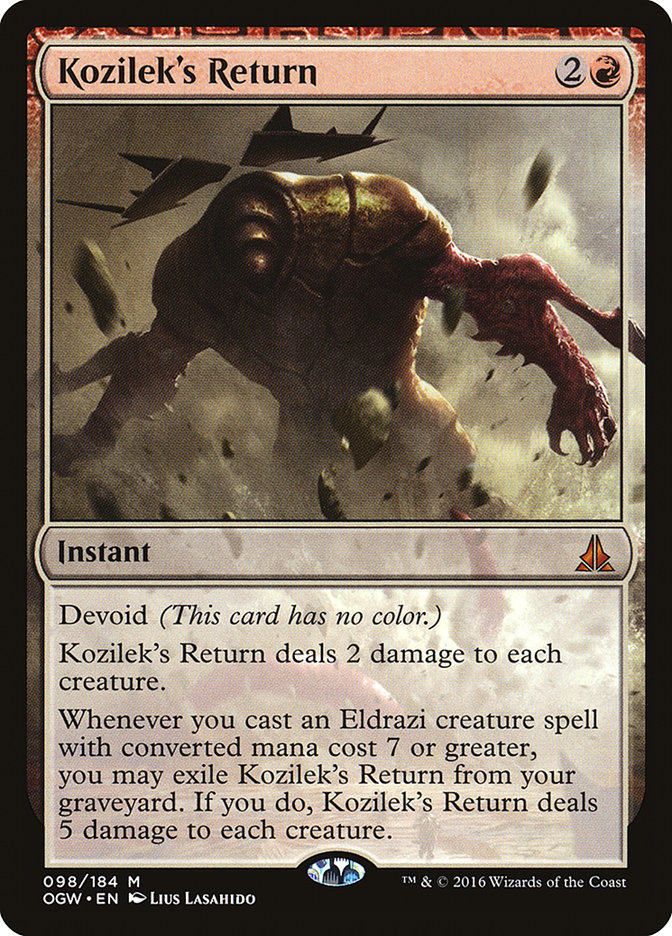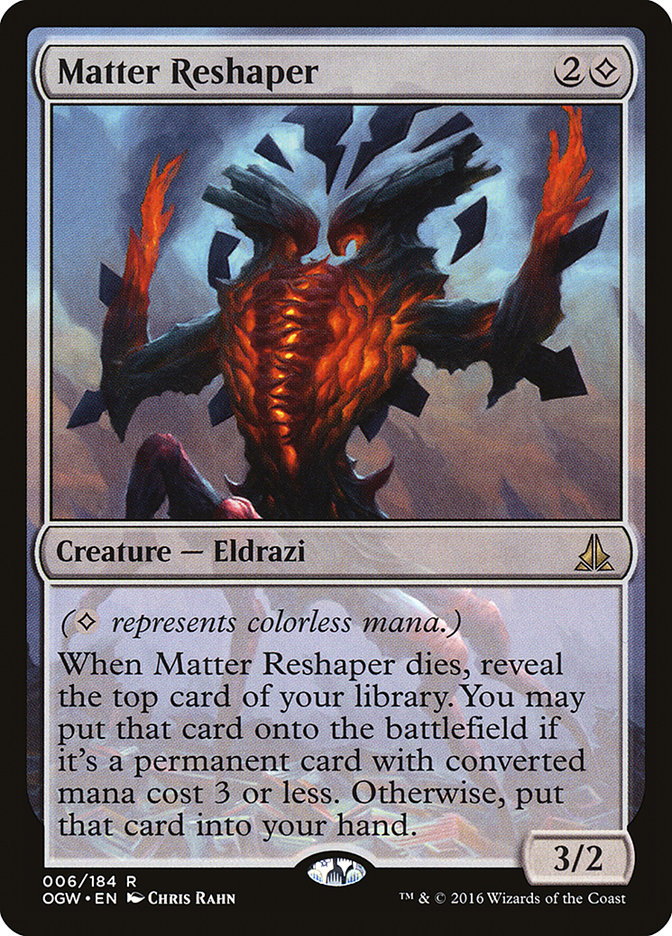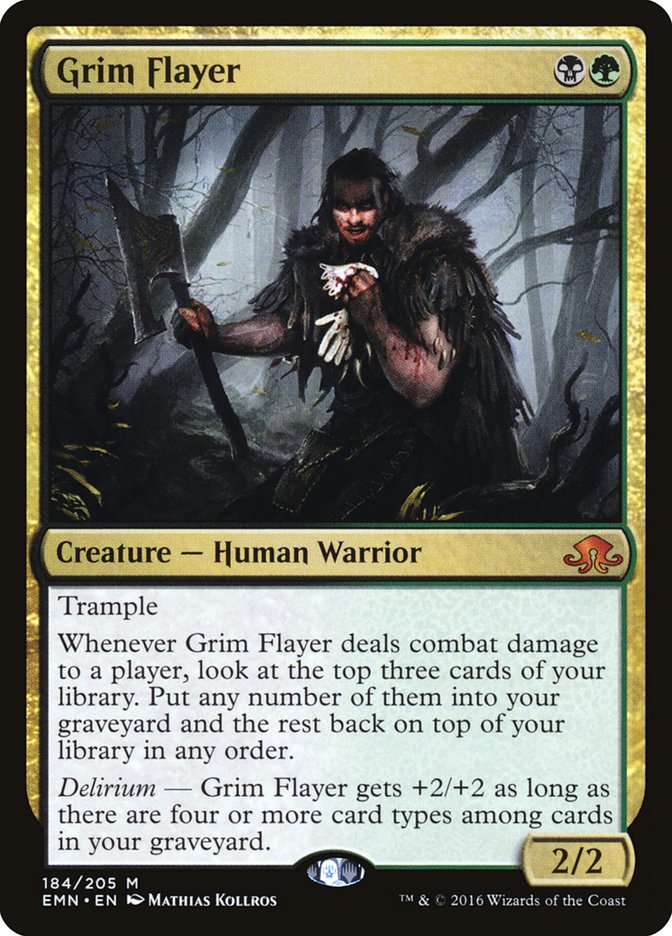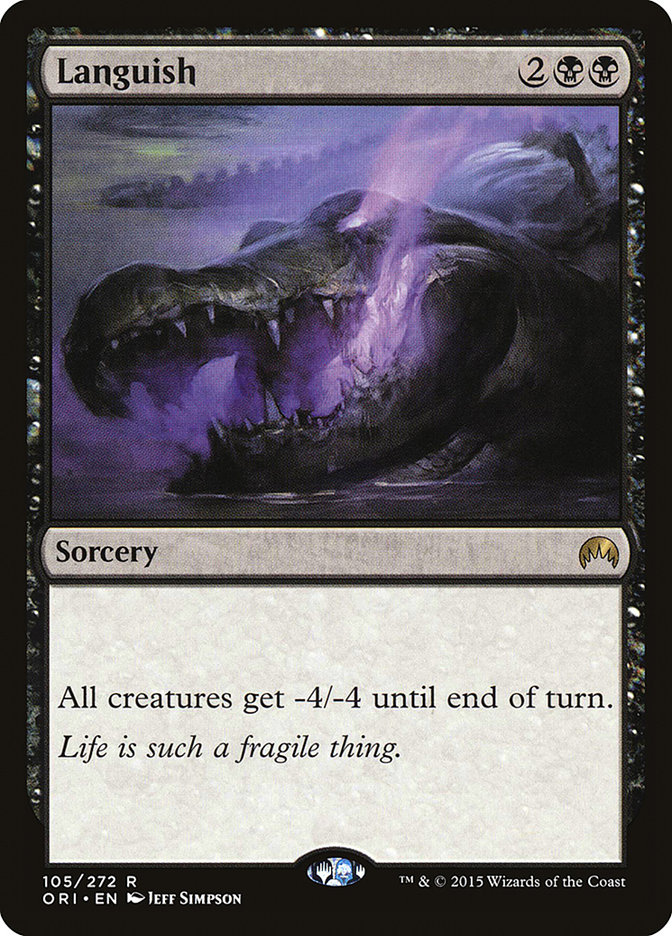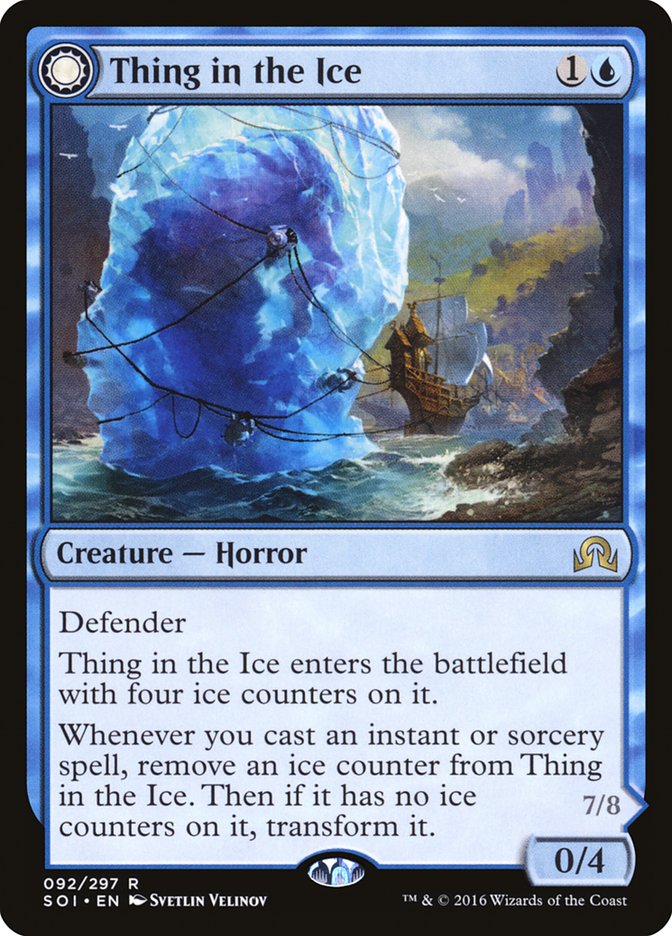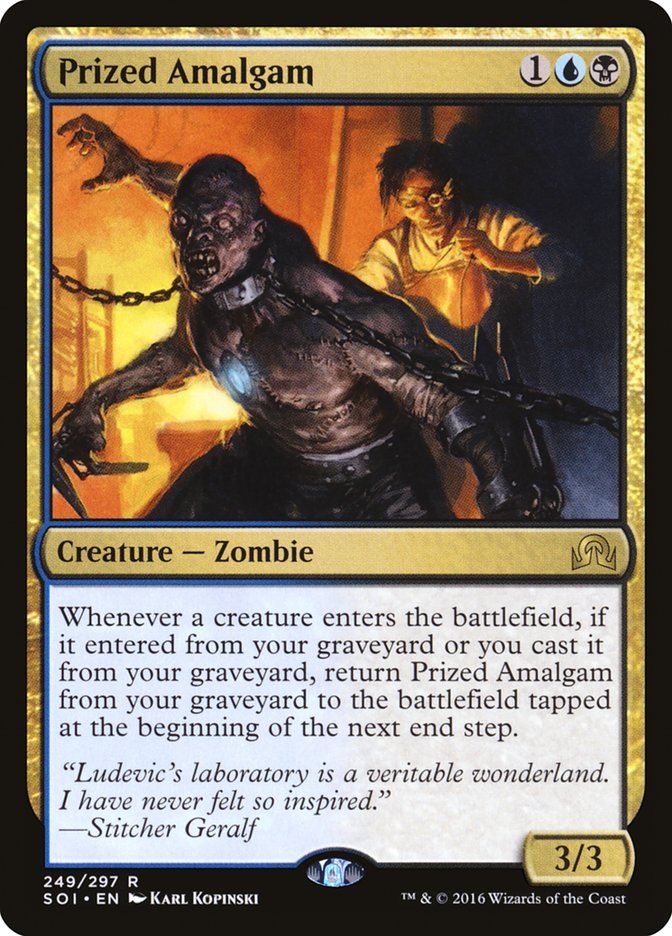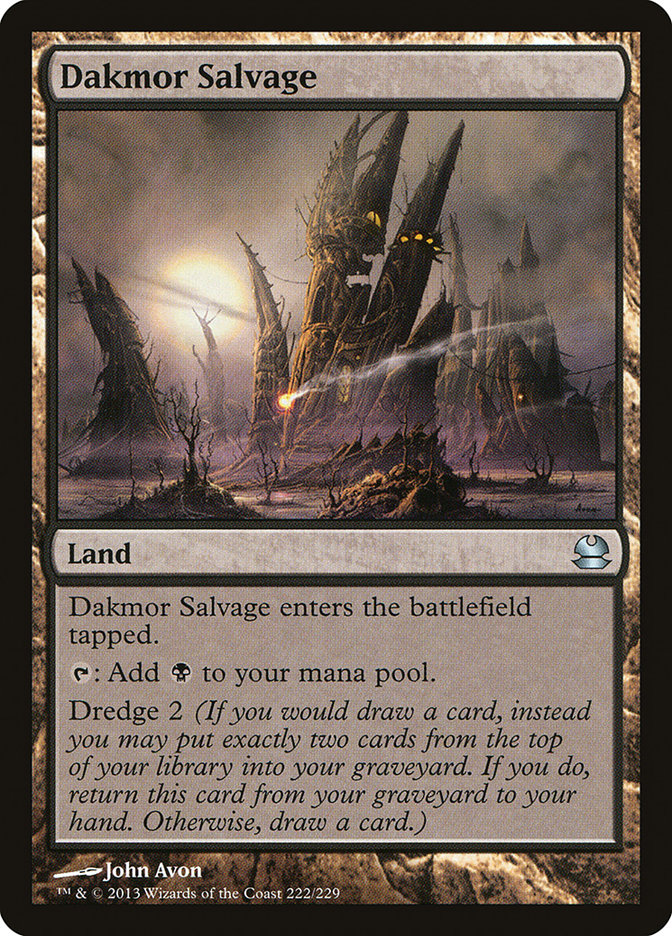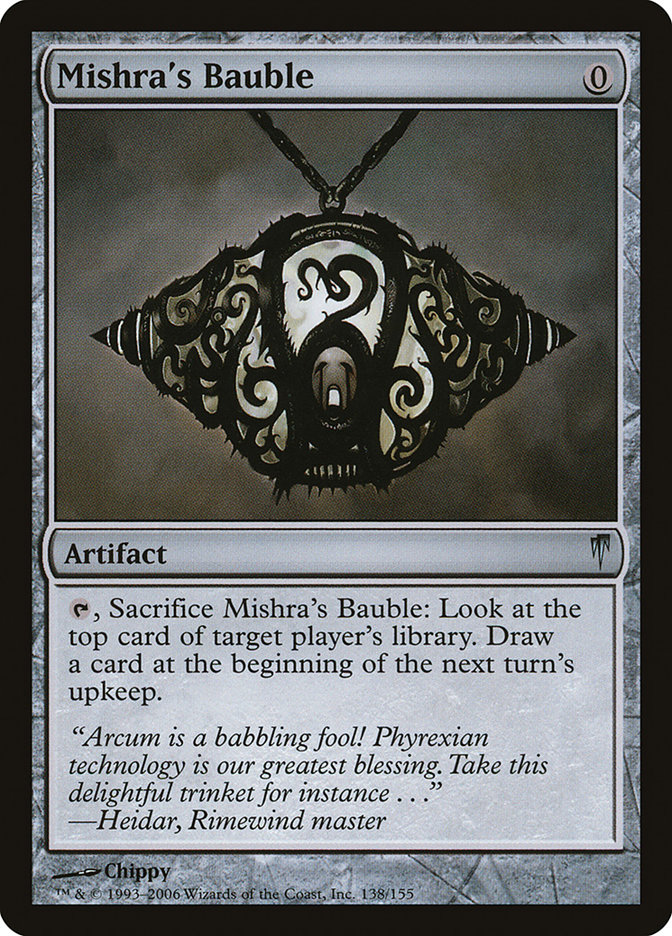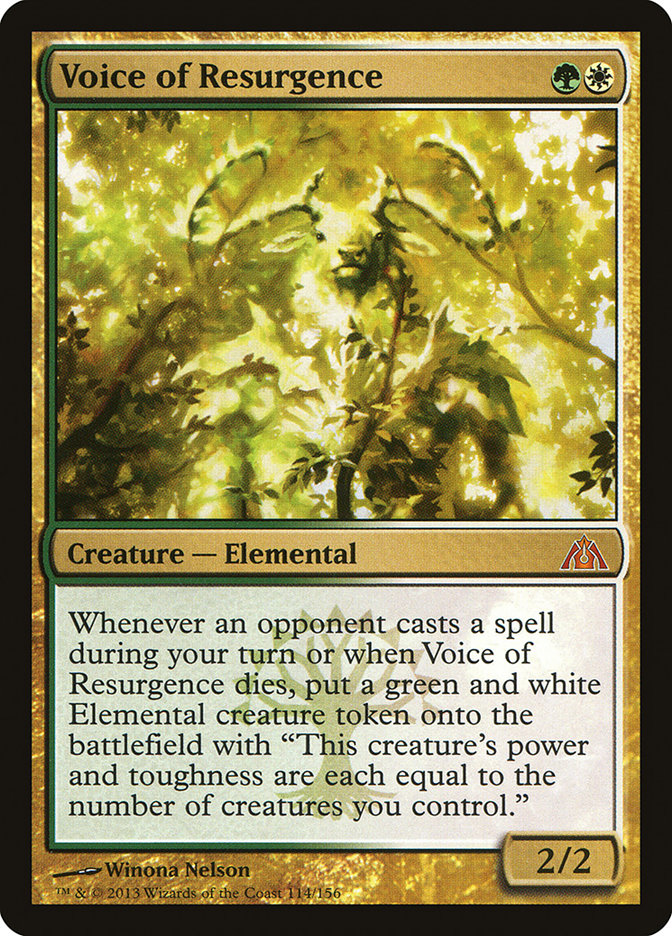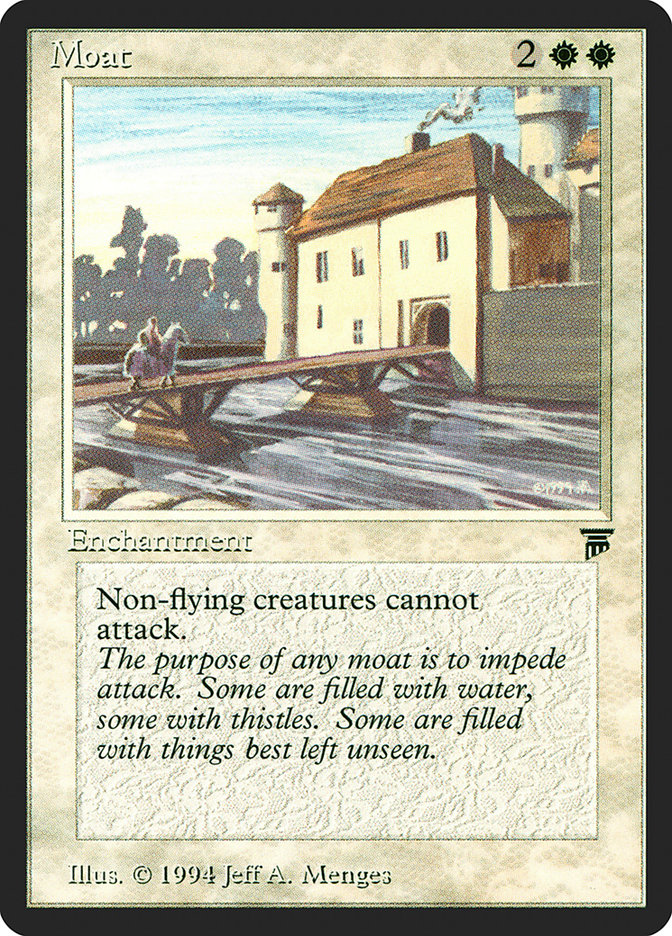Pro Tour Eldritch Moon is in the books, and all of us Standard players can finally breathe a sigh of relief.
I have to admit, I was a tad worried that Standard was going to continue on as an endless march of Bant Company matches until the card rotated. Bant Company was indeed most popular Day 1 deck at the event, and it did make up a quarter of the Top 8, but it is far from the only Tier 1 deck in Standard right now. Curious where the format is going from here? Want to know how you can profit on the coming trends? Let’s start with a look at what happened in Sydney over the weekend.
Breaking Down the Top 8
Before we get too deep into the hot new brews, let’s take a quick look at a deck that isn’t going anywhere until rotation frees us from its tyranny next month. Luis Scott-Vargas and Yuta Takahashi both made Top 8 with Bant Company, and their lists are fairly similar. Here’s LSV’s list:
Creatures (26)
- 1 Jace, Vryn's Prodigy
- 4 Reflector Mage
- 4 Sylvan Advocate
- 2 Archangel Avacyn
- 3 Tireless Tracker
- 4 Duskwatch Recruiter
- 4 Spell Queller
- 4 Selfless Spirit
Lands (26)
Spells (8)

And here’s Takahashi’s:
Creatures (26)
- 4 Jace, Vryn's Prodigy
- 2 Nissa, Vastwood Seer
- 4 Reflector Mage
- 4 Sylvan Advocate
- 4 Tireless Tracker
- 4 Duskwatch Recruiter
- 4 Spell Queller
Lands (25)
Spells (9)

Both brews run full sets of Duskwatch Recruiter, Sylvan Advocate, Reflector Mage, Spell Queller, Dromoka’s Command, and Collected Company. Takahashi opted for three more copies of Jace, Vryn’s Prodigy; two Nissa, Vastwood Seer; an extra Tireless Tracker; and an Ojutai’s Command.
On the other side, Scott-Vargas went with four copies of Selfless Spirit, two copies of Archangel Avacyn, and an extra land. Luis also ran two copies of Tamiyo, Field Researcher in his sideboard, where they did a lot of work on camera over the weekend.
Despite the fact that two Bant Company players made Top 8, it appears to have been a poor choice for the event. Its Day 2 conversion percentage was just 53.4%, which is less than stellar. Since an average deck should make Day 2 61.3% of the time, most of the Bant Company players in Sydney probably went home feeling like they made the wrong choice.
Does that mean that Bant Company is a bad choice going forward? Hardly. First, it was the deck that everyone was gunning for going into the event, so the format had already adjusted to deal with it. G/R Ramp and Delirium may have put up better results over the weekend, but their win percentages will dip now that everyone knows what they’re dealing with.
Second, and perhaps more importantly, players that show up at a Pro Tour with the consensus best deck tend to be unaffiliated and first- or second-time pros with less experience and skill. These players don’t have the benefit of an elite testing team dedicated to finding the latest new tech. So did they lose because they played Bant Company, or did they lose because they aren’t quite at the level of the twenty or 30 best players in the world? It’s hard to say with such a small sample size, but I bet Bant Company would have put up better numbers in slightly different hands, as it did with the players who piloted it all the way to the Top 8.
Financially, though, I have to imagine that Bant Company’s best days are behind it. Standard prices tend to peak the day or two after the Pro Tour, and I can’t imagine very many people will be investing in a deck that is about six weeks away from rotation. Between that and the fact that Bant Company had a bad Day 1, I imagine some of these prices will fall off pretty quickly.
Once you start getting into individual cards, though, the picture of what to sell starts to look a little more murky. Duskwatch Recruiter, Sylvan Advocate, and Tireless Tracker will certainly show up somewhere after rotation. Spell Queller and Selfless Spirit may end up in some sort of post-rotation U/W Spirits deck. (Spirits had a poor showing at the Pro Tour, but that doesn’t mean it won’t be a player once Collected Company is gone.) Jace, Vryn’s Prodigy and Collected Company will be playable in Modern and are solid long-term holds. Archangel Avacyn will undoubtedly show up somewhere (like, say, the B/W deck that won the whole shebang.)
So yes, feel free to sell your Bant Company decks if you’d like, but I suspect we’ll be hearing from all of the cards on this list in the future. To me, the only two must-sells right now are Spell Queller and Tamiyo, Field Researcher. They are both incredibly powerful cards, but their current prices are very high and it’s possible that they won’t have a home in a post-Company world. I’d get out now just in case.
Next up, we’ve got Temur Emerge. Two copies of this made it to the Top 8 as well, one piloted by Owen Turtenwald all the way into the finals and the other by Andrew Brown. Here are their lists:
Creatures (16)
- 3 Pilgrim's Eye
- 3 Emrakul, the Promised End
- 1 Wretched Gryff
- 4 Gnarlwood Dryad
- 3 Elder Deep-Fiend
- 2 Ishkanah, Grafwidow
Planeswalkers (1)
Lands (21)
Spells (22)

Creatures (24)
- 3 Shaman of Forgotten Ways
- 4 Jace, Vryn's Prodigy
- 1 Nissa, Vastwood Seer
- 4 Matter Reshaper
- 4 Wretched Gryff
- 3 Elder Deep-Fiend
- 1 Lashweed Lurker
- 4 Primal Druid
Lands (24)
Spells (12)

Despite both being Temur-colored Emerge decks, these lists are actually quite different. In terms of rares and mythics, Owen had two copies of Ishkanah, Grafwidow; three copies of Elder Deep-Fiend; three copies of Emrakul, the Promised End; two copies of Corrupted Grafstone; four Kozilek’s Return; and one Chandra, Flamecaller. Andrew also had the three Elder Deep-Fiends and four Kozilek’s Returns, but instead of the other rares, he had four copies of Jace, Vryn’s Prodigy; four copies of Matter Reshaper; and one Nissa, Vastwood Seer.
The fact that two very different builds of Temur Emerge made Top 8 makes me excited for its future. Since neither Kozilek’s Return nor Elder Deep-Fiend is in rotation mode, I suspect that this deck has a decent shot at surviving rotation. Elder Deep-Fiend is $8 right now, which is pretty high for a single-deck rare. It might sustain that price, and it could spike to $10-$12 briefly, but I don’t see much more upside than that unless another Emerge variant comes along.
Kozilek’s Return is a small-set mythic, though, and it’s just $10 right now. Depending on where the format goes from here, I can see $30 upside without much effort. I’m a buyer at $10 if I’m planning to play this deck going forward.
As for the other cards, Matter Reshaper didn’t have a good enough event to justify a spike too far beyond its current retail. I’m in for a set of Corrupted Grafstone, though—it’s still a bulk rare, so there’s no reason not to take a flier there.
Between R/G Ramp, Temur Emerge, and B/G Delirium, there were ten copies of Ishkanah, Grafwidow in the Top 8, and they appear across four different decks (including the one-of in Brown’s sideboard). There’s no bargain to be found here at $15 retail, but the card could easily bounce between $10 and $25 over the next few months if it continues to find success in multiple Tier 1 lists. Again, the upside is limited here because this isn’t a four-of anywhere, but trading for these at current retail is fine if you need them.
Creatures (11)
Planeswalkers (2)
Lands (24)
Spells (23)

Creatures (13)
- 2 Dragonlord Atarka
- 1 Nissa, Vastwood Seer
- 2 World Breaker
- 1 Sylvan Advocate
- 2 Hedron Crawler
- 1 Ulvenwald Hydra
- 2 Emrakul, the Promised End
- 2 Ishkanah, Grafwidow
Lands (22)
Spells (25)

By the numbers, R/G Ramp was the most dominant deck on Day 1. It continued to post excellent results on Day 2, and both Ken Yukihiro and Reid Duke piloted their respective builds into the Top 8. They both lost in the first round, but I doubt that will do much to damper the enthusiasm surrounding the deck.
Did you catch the fact that both of these decks run three copies of Kozilek’s Return? That makes a total of fourteen copies in the Top 8. Again, this is a small-set mythic with a reasonable history of success. It isn’t going to rotate in the fall, either. This card might not be an under-the-radar deal by the time this article runs, but I have no doubt it’s going to be one of the key mythics in the format going forward.
Both of these decks also run a full four copies of Traverse the Ulvenwald. The card is also crucial to the success of Sam Pardee’s Top 8 B/G Delirium Build, and cheap green spells that work in multiple Tier 1 decks make me salivate a little. At $5, grabbing a personal set now is a low-risk, moderate-reward play.
Another crucial piece of these decks is one of the Pro Tour’s two big breakout cards: Emrakul, the Promised End. I’m a fan of Emrakul going forward, and the fact that it showed up in three(!) different Top 8 lists proves to me that it will be one of the main control/ramp finishers going forward.
Can Emrakul sustain a $35 price tag? It’s possible, but I can’t imagine it goes much higher without showing up in Modern or doing something else unexpected. It’s a two-of or three-of at most, which limits its upside quite a bit. Feel free to buy these at current retail if you need them, but be prepared for the chance that it will settle in closer to $20 by the time Kaladesh is released.
These decks also run a litany of other rares and mythics that might see small increases in price. World Breaker; Dragonlord Atarka; Ulvenwald Hydra; Sylvan Advocate; Chandra, Flamecaller; Hangarback Walker; and Collective Defiance all make an appearance across these two lists. I wouldn’t worry too much about the rotating cards, but I kind of like Collective Defiance as a spec buy. $1.50 is a nice flier price, and if an aggressive red deck shows up after rotation, it might end up becoming a cornerstone of the format. I also really like Chandra, Flamecaller right now—she’s just $11.99, and she always seems to show up in a variety of very good decks.
Creatures (15)
- 1 Den Protector
- 2 Nissa, Vastwood Seer
- 2 Sylvan Advocate
- 3 Tireless Tracker
- 1 Emrakul, the Promised End
- 2 Ishkanah, Grafwidow
- 4 Grim Flayer
Planeswalkers (4)
Lands (24)
Spells (17)

Liliana, the Last Hope was everywhere on Day 1. Along with Emrakul, the Promised End, Liliana was the breakout card of the tournament for everyone glued to the Twitch coverage. If you’re wondering why her price surged to $45, that’s why. Liliana really is that good.
Can Liliana go higher? Sure. When Liliana of the Veil dominated Standard, she hit $70-$80 for a month or two. Jace, Vryn’s Prodigy flirted with $100 just last year. Cheap, efficient, and dominant planeswalkers tend to be the most valuable cards in Standard by a wide margin.
While Liliana, the Last Hope could hit those levels, I certainly wouldn’t bet on it. Liliana does cost double black to cast, and she’s a narrower and less powerful card than Liliana of the Veil. She is actually at her best in a metagame like the one at the Pro Tour, where slower decks aren’t pressuring her and she can steal a game by going off with her ultimate. If the format speeds up, that line of play will happen a lot less often. That doesn’t mean she won’t continue to show up at the top tables, but a price settling in closer to $30 seems more likely to me than a continued Jace-like surge. If I had any of these right now, I’d be selling them into the current hype.
The other exciting new mythic in Pardee’s deck is Grim Flayer. It’s nice to see the two-drop make an appearance in the Top 8, and it did a lot of work on camera, but I still think the card is too narrow to have much more upside. If B/G Delirium becomes the deck to beat, I could see Grim Flayer end up closer to $20 than its current $10 value. If not, the $7-$12 range seems more likely to me. Buying at current retail is fine if you want to play this deck, but I don’t love it as a spec target right now.
It’s also worth noting that Languish is a pretty key card for this deck. Can Delirium survive rotation and the loss of its preferred sweeper? I expect so, but it’s worth paying close attention to the previews just in case. If black doesn’t get another card like this, and it very easily might not, this desk is at risk of being overwhelmed by whatever the next great aggro deck will be.
Creatures (7)
Planeswalkers (6)
Lands (26)
Spells (21)

Let’s finish up our journey through the Top 8 with Lukas Blohon’s excellent B/W Control deck. This was the other Liliana, the Last Hope / Languish deck, but Blohon chose to go with Kalitas, Traitor of Ghet and a package of powerful white cards instead of a green Delirium strategy. As we saw in the Top 8 coverage, attacking a slow format with a bunch of planeswalkers is incredibly powerful.
The real strength of B/W Control is how customizable it is. Many of the format’s most powerful cards are present here, and you can mix and match them at will to directly attack your local metagame. Because of this (and, you know, because it took down the whole PT), I expect this will be a very popular choice for FNM players going forward.
Financially, however, there isn’t a ton of upside here. We knew that most of these cards were good before the Pro Tour started. Anguished Unmaking is somewhat interesting as a short-term flip, but it’s ultimately a two-of that can only really go in one deck. Linvala, the Preserver is a one-of here, which limits her upside considerably as well.
As I said, I wouldn’t get too hung up on any one or two cards in this list regardless—control decks like this tend to shift around based on what gets printed and what the format’s prevailing boogeyman is. We’ll see what happens once Kaladesh spoilers begin—if the fixing gets better or a key blue card is printed, this deck could shift toward U/B, U/W, or Esper. It’s also worth noting that this deck had very little Day 1 success outside of Blohon—it looked overwhelmingly powerful in the Top 8, but I’m far from sold that it is the best deck in the new Standard format.
Beyond the Top 8
Pedro Carvalho went 9-1 in Standard with a U/R Spells list that ran Thing in the Ice, Collective Defiance, Fevered Visions, and Jace, Vryn’s prodigy. Even though he didn’t make Top 8, expect this list to show up at your FNM later this month because it is very sweet and exactly the sort of thing that local Johnnies love to brew up. Thing in the Ice is $6 right now, and it might be a pretty solid buy at that price.
Benjamin Nikolich also went 9-1 in Standard, and his performance is worth talking about a little because he did it with one of the only pure aggro decks in the format. It was a pretty standard Mono-White Humans list featuring Thalia’s Lieutenant, Hanweir Militia Captain, Kytheon, Hero of Akros, Knight of the White Orchid, Declaration in Stone, and Always Watching. If these cards tank over the next couple of weeks because they didn’t make Top 8—not an unreasonable assumption—you might be able to snag a very good deck on the cheap.
Joel Larsson’s 8-1-1 Standard deck is a Jund take on the Emerge/Delirium strategy, running both Mindwrack Demon and Distended Mindbender alongside Liliana, the Last Hope; Kozilek’s Return; Languish; Ishkanah, Grafwidow; and a single copy of Emrakul, the Promised End. I’m not sure which version of these decks will end up dominating in a post-PT world, but the Demon and the Mindbender are still relatively cheap and are at least worth targeting in trade just in case.
Nick Ball ran a Naya deck to 7-2-1 that featured two copies of Thalia’s Lancers and singleton targets including Gisela, the Broken Blade; Bruna, the Fading Light; Sigarda, Heron’s Grace; Linvala, the Preserver; and a couple of Dragonlords alongside some early-game utility like Sylvan Advocate and Tireless Tracker. Even though this wasn’t a breakout strategy, toolbox decks tend to be popular in local metagames. Be sure to pull Thalia’s Lancers out of your post-draft bulk boxes.
Also at 7-2-1 was Yuki Matsumoto’s Prized Amalgam / Haunted Dead / Noose Constrictor / Elder Deep-Fiend brew. This was one of the more interesting decks that was successful without making Top 8, and I wouldn’t mind owning a set of Prized Amalgam going forward. This deck really does like having Jace, Vryn’s Prodigy on the battlefield, though, so I’m not convinced it survives rotation.
Lastly, Ondrej Strasky (also 7-2-1) provides us with a blueprint for what a successful Zombie deck might look like. Aside from two copies of Liliana and four Jaces, his deck ran four Voldaren Pariah, four Relentless Dead, four Haunted dead, four Prized Amalgam, four Cryptbreaker, and three Dark Salvation. I liked Voldaren Pariah a lot during preview season, and I still think it’s a decent buy at just $2. People really want Zombies to work in Standard, and this list will be their new starting point whether they end up being a top tier deck or not.
Dropping Like It’s Hot
If you watched enough coverage or dipped far enough into the decklists, every good card in Standard made an appearance at some point. Based on current prices, however, these are the cards that didn’t do enough to maintain their current prices and will likely drop in price over the next couple of days:
· Ulamog, the Ceaseless Hunger
Standard in a Nutshell
Pro Tour Eldritch Moon had one of the slowest, grindiest metagames I can remember. Right now, the top decks appear to be (in some order): Bant Company, R/G Ramp, Temur Emerge, and some form of Abzan Delirium. The second tier includes Mono-W Humans, U/B Zombies, and Naya Legends. I’m not sure where B/W Control and U/R Spells slot in because there weren’t enough near the top tables, but they both appear to be potential top-tier strategies.
It will be interesting to see whether a pure aggro deck makes it to the top tier before rotation or not. The problem is that all of the top strategies in the format line up well against an early onslaught of creatures. Languish and Kozilek’s Return are everywhere, and Liliana, the Last Hope makes playing one-toughness creatures really painful.
Metagames are ever-evolving, though, and I’m sure something new will show up to fight against the slow delirium and emerge decks. Crush of Tentacles, maybe? This deck sure is sweet, though it was known going into the Pro Tour and no one opted to run it:
Creatures (18)
- 1 Elvish Visionary
- 4 Den Protector
- 2 Jace, Vryn's Prodigy
- 2 Nissa, Vastwood Seer
- 1 Bounding Krasis
- 1 Hangarback Walker
- 1 Void Grafter
- 1 Emrakul, the Promised End
- 1 Ishkanah, Grafwidow
- 4 Noose Constrictor
Planeswalkers (2)
Lands (25)
Spells (15)

Regardless, if you’re building in Standard right now, you’d better know how to deal with all the normal Collected Company nonsense as well as Liliana, the Last Hope; Ishkanah, Grafwidow; Kozilek’s Return; Languish; a very fast Elder Deep-Fiend; and, uh, Emrakul, the Promised End.
Good luck, brewers! You’re going to need it.
This Week’s Trends
Thanks to all the excitement surrounding the Pro Tour, there hasn’t been all that much movement outside of Standard. Mishra’s Bauble is the biggest gainer in Modern, mostly thanks to its place in Death’s Shadow Aggro as well as the potential for Delirium to take off in Magic’s Eternal formats. While I expect the card to remain expensive thanks to low supply and high demand going forward, I’d hold off a few weeks before buying if possible. Some of the new price appears to be buyout-related, and I’d wait to see where the market stabilizes before investing.
Dakmor Salvage is also up a bit, thanks to Modern Dredge and (potentially) its applications with Splendid Reclamation. I like the card, but don’t forget that it was an uncommon in the first Modern Masters set, so its upside isn’t much higher than $5-$6 unless one of those decks really takes off.
Voice of Resurgence is still relatively cheap in paper Magic, but it was the biggest Modern gainer on MTGO last week. If you want a relatively safe card with some upside to invest in right now, it looks like a pretty great target to me.
The Legacy Reserved List spikes finally appear to be slowing down. Spiked cards like Lion’s Eye Diamond and Moat continue to fall off as a new price equilibrium struggles to be reached. I still don’t think we’ve reached bottom on those, and I’d rather be a seller than a buyer at the moment.
The contents of From the Vault: Lore were announced, and the community reaction was a collective shrug. WotC used the set to reprint two key Legacy cards that aren’t Modern-legal in Umezawa’s Jitte and Dark Depths, so I’d expect the price of each to come down significantly once the set hits shelves. As with most From the Vault foils, expect the premium version to be worth significantly less than the set foil and more in line with the original non-foil printing.
While most From the Vault foils are worth a little more than their non-foil brethren, I’d rather have the set version most of the time because they are much easier to trade. Many competitive players strongly dislike the From the Vault foiling process and the way the cards are curved straight out of the package.
These sets are strong buys at MSRP, and I can’t imagine a box containing Jitte and Dark Depths will ever be worth less than $35. This isn’t one of the stronger From the Vault sets, though, and I wouldn’t pay too much of a premium for it unless you’re really excited about a few of the other fifteen cards. When in doubt, just buy the singles.
Lastly, a major Magic Organized Play announcement dropped last week, including all of the Grands Prix that will be played during 2017. There will be roughly the same number of Modern and Legacy events next year as there were this year, including a massive three-GP weekend in Las Vegas that includes Standard, Modern, and Legacy. I can’t see any of these announcements affecting the future of Magic finance at all, though I can imagine that Grand Prix Las Vegas in 2017 will be a great place to both buy and sell cards. It also means that there is unlikely to be a major Sealed event kicking off Modern Masters 2017, and it will probably come and go from store shelves over a period of several weeks next summer much like Eternal Masters did.
The announcement also said quite a bit about the future of the Pro Players Club, including clarification on a lot of stuff that angered many of the Magic pros a few months back. Since I am not (and will never be) a professional player, I can’t really speak on how good or bad these changes are. I don’t know if the lack of articles written about them has more to do with how reasonable they are versus the fact that all of the pros have been sequestered while prepping for the Pro Tour, but the fact that we haven’t heard much about them is encouraging. If the changes do end up being problematic, I expect we’ll be hearing a lot more about it next week.
Comments from Last Week
What’s the update on expeditions? How far have they moved? Any picture of their ceiling?
– Jack R. Heck
After experiencing a 20% rise when Oath of the Gatewatch came out, Zendikar’s expeditions have been almost weirdly stable over the past seven months. The overall index has dropped a very small amount, but they aren’t bought and sold enough for that trend to mean very much. Most of the people who really wanted these have already bought them, and everyone else is focused on other things at the moment. Expeditions are old news.
This is good news for anyone with a bunch of money who really wants to own these cards. Buy and trade for them while demand is down, because it’s not like the supply is going to increase anytime soon. While there is a chance that these will never really be all that sought-after, a more likely scenario is that they are bought out and spike at some point over the next 3-4 years. Until that happens, I don’t think we’ll have a very good sense of what their price ceiling is. If I had to guess, it would be between 40% of current retail (lower demand cards) and 130% of current retail (higher demand cards). These are poor specs if you want liquid, short-term investments, but they’re fine places to hide away value for the long haul.
What are your expectations for Conspiracy 2? What are you looking for?
– Nich Grayson
It’s hard to make predictions when we only have one reference point, which is the first Conspiracy set in this case. That set ended up having several important reprints for Legacy and Commander, a new marquee planeswalker that was playable as far back as Vintage, a bunch of foils that had higher demand than expected, and more bulk rares than you could shake a stick at. I underestimated the price of foils like Coercive Portal and overestimated the price of sealed boxes a year or two after release.
This time around, I expect foil prices to start at a higher baseline. If they don’t, you might want to pick up a bunch of the foil mythics as soon as possible—they tend to be massively under-opened compared to their counterparts in Standard-legal sets. I also suspect that there will be a small handful of Casual and Legacy cards whose price will be reprinted into oblivion. It’s not really worth guessing what those will be ahead of time—anything expensive and old is a possibility.
Last, I expect the set will be a blast to play. Boxes of Conspiracy were always worth the price of admission, provided you were able to draft them with your friends. Grab a few and play the Kaya, Ghost Assassin lottery!
Deals of the Week
While the idea of format “seasons” is mostly a relic of the past, it’s worth noting that the current Constructed PPTQ format is Modern. Because of that, I expect Modern cards to be in slightly more demand between now and the regional Modern PTQs on December 3rd and 10th.
If you’re looking to pick up any Modern staples over the next couple of months, this week might be your best shot. There are an absolute ton of Modern staples on sale this week, including tons of top-tier staples like Mox Opal and Cryptic Command. The discount is a full 15% across the board, so focus on more expensive cards if possible. Whenever you’re dealing with a percentage discount, that’s where the best savings will be found. I already like buying major staples this time of year because this is when demand tends to be at its lowest point and prices tend to flag. Getting a discount on top of that is just gravy.


